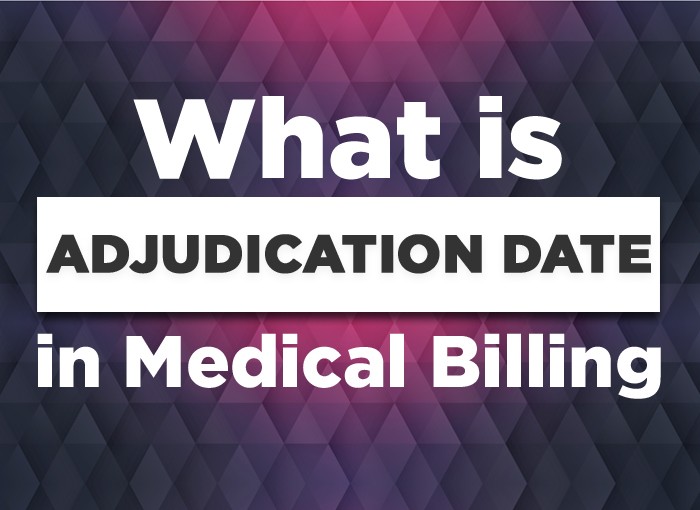What is an Adjudication Date in Medical Billing
In the health care industry, every hospital relies on insurance companies for the payment of medical services received by their insured patients. So, every time an insured patient visits a hospital for the treatment the hospital is required to send medical claims to the insurance company. Nowadays medical claims are submitted electronically to make the process hassle-free, quick and efficient. After receiving the claims from the health care provider, the insurance company spends some time adjudicating the claims. This is where the adjudication date comes in.
In order to understand the term adjudication date, it is important to understand the term claims adjudication.
Claims Adjudication
Claims adjudication refers to the process of reviewing medical claims for necessary information before making the payment. The idea is to judge or review the submitted claim for its validity and then pay or deny the reimbursement based on the result.
Definition of Adjudication Date
The Research Data Assistance Center (ResDAC, 1996) —a Centers for Medicare and Medicaid Services (CMS) contractor, defines adjudication date as a “date on which the claim or encounter was adjudicated by the state.” But for fee-for-service claims adjudication date refers to the “date on which the claim was adjudicated for the payment.” (https://www.resdac.org/cms-data/variables/paymentadjudication-date)
The Claims Adjudication Process
While adjudicating the claims the insurance company follows five steps:
- Initial Processing Review: This step focuses on reviewing information such as patient name (in case misspelled), mismatched gender of the patient, incorrect/invalid identification number, plan number or member ID, incorrect or missing diagnosis code, date of service, and service codes.
- Automatic Review: Information reviewed includes—submission of duplicate claims, unnecessary service delivered, invalid diagnosis and procedure codes, invalid pre-authorization/certification, claims submitted after the deadline, and patient eligibility (for claim mismatched, inactive/terminated coverage and missed payments, etc).
- Manual Review: Claims are manually reviewed by experienced medical and health care claims examiners. A patient’s medical records may be demanded and reviewed for unlisted procedures while determining their necessity. Any mismatched information may cause the claim to stand invalid.
- Payment Determination: This step is vital in determining whether the reimbursement should be made or not. If yes, then how much amount should be reimbursed? The payment is determined in three ways—paid, denied, and reduced.
- Payment: Finally, the insurance company submits payment to the medical office. This payment is referred to as remittance advice or explanation of payment. The purpose of remittance advice is to explain the reasons behind any adjustment and reduction of payment, denial, or uncovered charges. It also contains information such as allowed amount, approved amount, covered amount, adjudication date, paid amount, and patient responsibility amount, etc.
The medical office must make sure to enter all the details correctly in order to get full reimbursement (or allowed amount). A single error in the submitted claim may result in an invalid claim leading to denial. The best way to submit an error-free medical claim is to outsource medical billing services from a clearinghouse or medical billing company. This helps the hospital to get the assistance of trained medical billers in order to submit claims with utmost accuracy.




